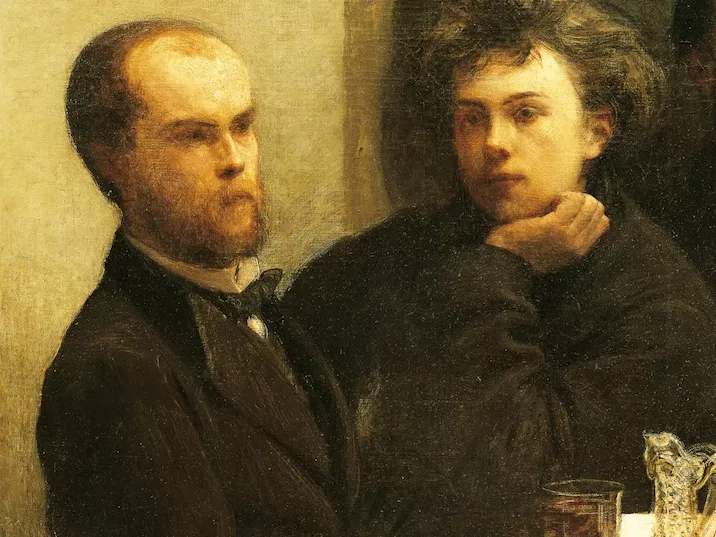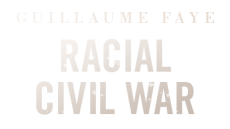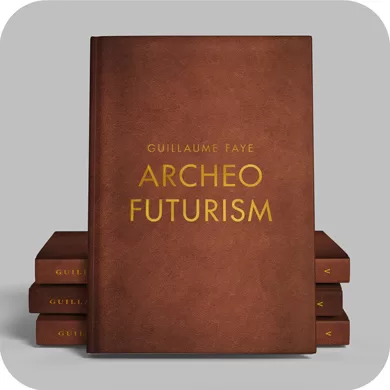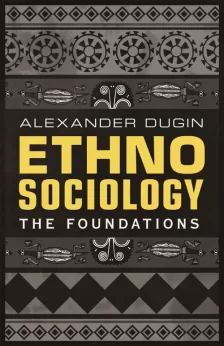The artist is sovereign. However, a work of art is, on the one hand, in accordance with its author and, on the other hand, independent of itself. These two views arise naturally from the difference in the perspective from which the work is viewed. From the former perspective, I accept the argument that works are mediocre, but from the latter perspective, I do not agree with the argument that works are mediocre. When looking at a work of art as an independent entity, the greater, the more serious, the more extraordinary the work, the better it is.
The responsibility of the artist is, on the one hand, cultivating himself and, on the other hand, edifying others. These two viewpoints also arise from differences in the perspective of the subject. From the former point of view, I accept the argument that writers can be mediocre, but from the latter point of view, I do not agree with the argument of the mediocrity of writers. When we look at writers as those who influence others, the more powerful the writer is, that is, the more extraordinary he is, the better he is.
The above is already obvious without me having to say it, but I would like to say a few words to avoid any misunderstanding of my opinion on humanism. If the basis of an argument is not clearly stated, it is easy for it to be misunderstood, deliberately or otherwise. In today’s busy literary world, there seem to be few people who are sufficiently rational as to look at an argument and then reflect on the basis of that argument.
The word “humane,” when broadly interpreted as “human,” no longer refers to a single thing, but rather to the various qualities possessed by individual human beings. It should include everything from the feeble to the strong, from the wicked to the good, from the lowly to the noble, from the sentimental to the robust, and many other things. It is a captive view to see man only as feeble, wicked, lowly, and sentimental, for in man the strong, the sublime, and the robust can also exist in equal measure, and even so, each of the right things is profoundly different from the other. Man is nothing if not rife with contradictions. And there are many degrees of each of these things, which exist in varying degrees of depth. In other words, the word “human” refers to the entire range of human qualities that extends to a certain extent vertically and horizontally. Anything that falls outside of this range then becomes seen as monstrous. The monstrous can be called divine at its greatest heights and demonic at its lowest depths. What determines the boundary between the human and the monstrous is the normal human mind in its normal state.
However, when it is said that a work is “humane,” or that “the characters in this work are humane,” this is not necessarily the case. The word “humane” is not used in the sense of “human” as described above. If it were used in the above-mentioned humanistic sense, it would be fair to say that there is hardly a work of art, or a single character, that is not humane. With the exception of a few major characters — although this exclusion is not necessary in the Japanese literary world — all characters are humane.
Then, what does it mean to be a humane person? For some, it means “the most humane.” And being described as the most humane is often used as a compliment to a work of art. The confusion arises when this limitation of “most” is not added as a compliment. The illusion arises when it is used as a eulogy for a work of art.
“The most humane” typically refers to that which is near the center of the spectrum of human nature. When viewed horizontally, it is visible as an intermediate, colorless thing that is neither strong, weak, nor good, and when viewed from above, it is an intermediate level plane that is neither profound nor serious. In a word, it is the most mediocre thing.
Beneath the rather pleasant-sounding mask of “humane,” many trivial things, which are neither poison nor medicine, escape. Cheap humanity is one of them. An unexamined view of life is one of them. One of them is simply the unvarnished record of one’s life, which is no better than a three-page article in a newspaper. Another of them is the usual family affairs that are taken for granted, occurring by chance and blindly. And there are many others. In other words, “humane” can be regarded as a dustbin, especially from the perspective of the artist. It is a dumping ground for the unbeautiful, for rubbish that is of no use to human spiritual life. And the works that are photographed as if they were taken directly from this dustbin comprising daily existence are often praised as the most humane. Of course they are humane, but that is no reason to praise them.
When we look at a piece of rubbish lying in a cesspool with a sincere and keen eye, at times a light shines from deep within, or else from on high. When that light shines, even the rubbish has a great soul. But when seen through the eyes of a photographic lens, the rubbish is still rubbish.
This kind of work, seen through mediocre eyes, takes refuge beneath the mask of being humane. People do not pursue it deeply, but rather, they are merely impressed by the fact that it is a “humane” work of art. When such a tendency grows, the literary and artistic world is filled with an atmosphere of deadlock and decay. For critics, it becomes difficult to distinguish between a work that is complete and a work that has been destroyed, between a work that is shallow and a work that is serious. The human is mistaken for the profound, and the power to accurately depict reality for its own sake is understood to be a keen artistic sensibility. They forget to critique the intrinsic value of the work, and instead focus on external criticism. With this sort of mindset, the flawed is always inferior, and the flawless is always superior. Critics cease to pay attention to the fact that one step further in terms of flaws is often more interesting than one step behind in terms of perfection. In the case of writers, this means that they forget to make efforts, taking their own inspiration and peace of mind as a matter of course. They are satisfied with the narrow world around them and make no effort to expand their field of vision. They will only stand idly on the ground, not once reaching up to the sky or digging deep into the depths of the earth. To be more specific, they only twist and turn the most affordable materials, manipulating the ordinary, forgetting to confront any greater issues, or to explore a single issue in any depth.
The greater the ambition, the greater the ideal — and the greater the artist. I cannot imagine an artist whose principle is mediocrity in all aspects. An artist’s ambitions and ideals should go beyond the ordinary human realm. His ambition should be to soar to the heavens, to penetrate to the depths of the earth, to transgress the realm of the heavens, and even to violate the realm of the devil. This is not to say that the artist is going to break away from the human realm entirely. The point of departure must be a human one, even if it is the most banal one. It does not matter if it is the most mundane, but only that the artist steps into it, understanding his own psyche even to the extent that it destroys him.
I cannot help but fear that if the tendency to make humanism a matter of course grows, the artist’s ambition will at last be suffocated. I fear that the entire literary world will stagnate and decay as artists’ ambitions are strangled for the sake of humanism. I fear that art as a whole will become no more impressive or glorious than an earthworm writhing on the ground beneath the cover of darkness. It is better to defeat the tendency to take as a principle the mediocrity in the three-dimensional sense of the three dimensions, the tendency to target the so-called humane. The artist should allow great light and great darkness to guide his entire vision. Let some soar to the sun and crash to the earth. Let some lose their footing and fall into the sea. Let some go deep beneath the ground and suffocate. It is better to take the extraordinary and dangerous path than the mediocre one, for it will lead us to greatness more quickly.
However, leaving the so-called humane does not mean leaving humility. There is a vast difference between the so-called humane and humility. Humility is a method of self-submission. It is a way of turning one’s eyes inwards, so as not to forget to put down one’s roots firmly and resolutely. It is an effort not to be blown away by the wind and water like a floating plant adrift at sea, or a leaf on a tree in a storm. However, what is called humane is to lie down on the ground and bask in the sun, to look around with half-asleep eyes. It is to abandon all efforts to penetrate into the depths of things around you, as well as efforts to gaze into the depths of your own soul. It is to receive ordinary things that add nothing to our lives with an ordinary heart. Therein lies the fatal flaw of the so-called humane.
Everyone knows the distinction between journalism and fiction, and photography and art. However, the most commonly taken photographs, those depicting interesting scenes from natural life, are often touted as human art. But, at least in a sense, this is the result of the reviewer being in some ways too clever for his own good. It is because his imagination is so sensitive that it can extract deep meaning, power, and suggestion from a flat, soulless photograph. In this case, the photograph itself is not a work of art. The critic himself becomes an artist in that he considers the photograph a work of art. In other words, the critic is either too intelligent or too stupid.
The artist’s true purpose is to capture what cannot be seen with the human eye, even what cannot be seen on the photographic surface. The true job of an artist is to put what he has grasped into concrete phenomena and to both “show” and “suggest” it. Showing gives a certainty to the work. It is suggestion that gives a work the power to move people. So-called humane works are those that do nothing but show, that is, depict. Depiction is, of course, the first step of art. However, it is still only the first step. Rather, the soul of art lies in the power of suggestion. And so we must boldly step out of the realm of the so-called humane. And in doing so, we must regain the soul of art. No matter how much soulless art there is, what good is it in the true sense of the word? An artist’s ambition can be as bold as he wants. To serve the event is one way to go about this, but to lead the event is the superior method. It is only necessary to maintain a spirit of humility. The artist is sovereign. Humble courage — such contradictory words are permissible in the dominion of art. It is the so-called humane which tethers the artists who seek to rush forward with humble courage to the yoke of mediocrity, making them unable to move, rendering the living lifeless.









